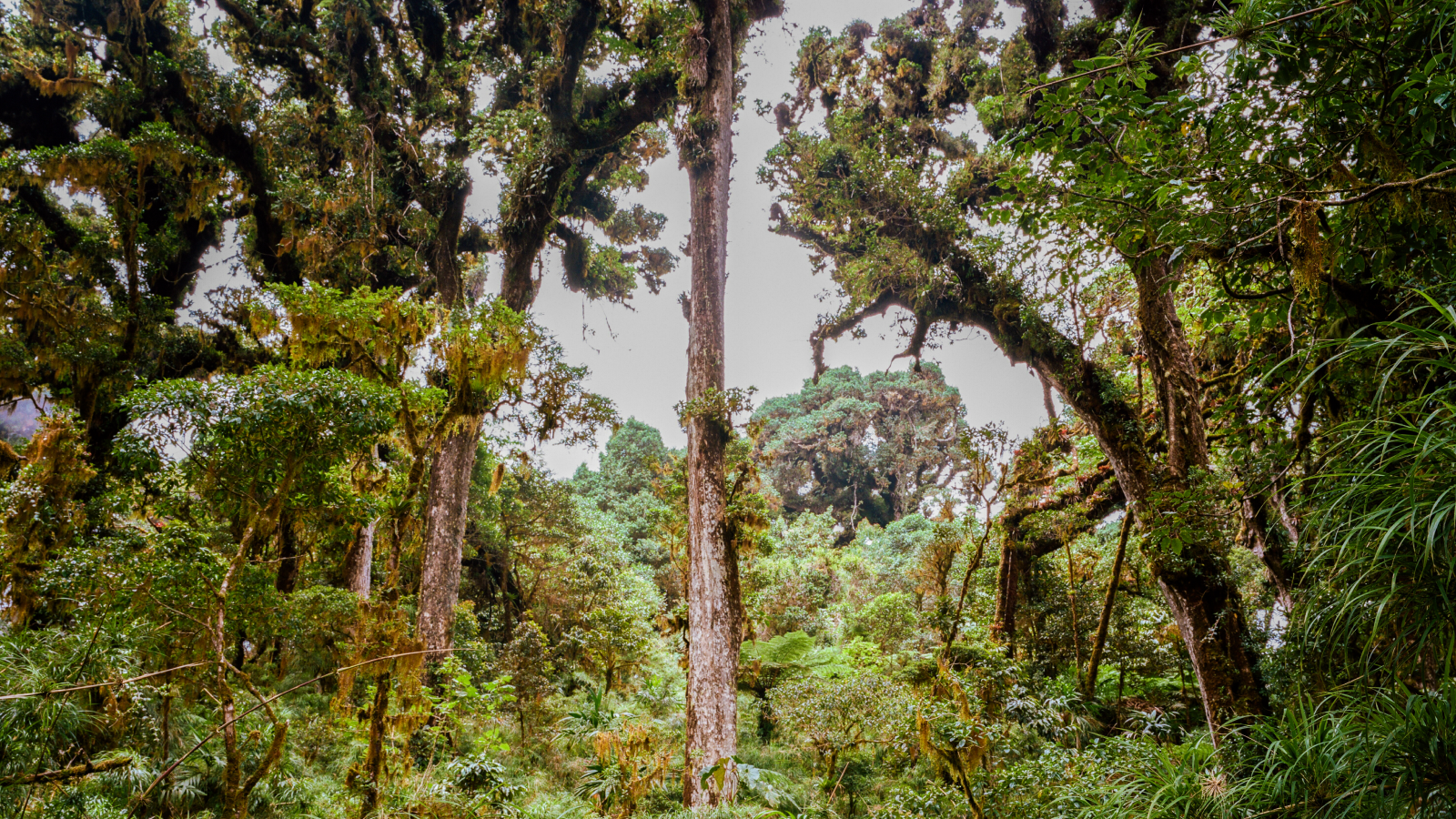In Images: Volcanic Monoliths of the American West

Volcanic monoliths

Volcanic monoliths are a common sight in the landscape of the American West. Rising high above the often-desolate surrounding plains, these structures of igneous rock are testament to a violent volcanic past throughout this area of the world.
El Capitan
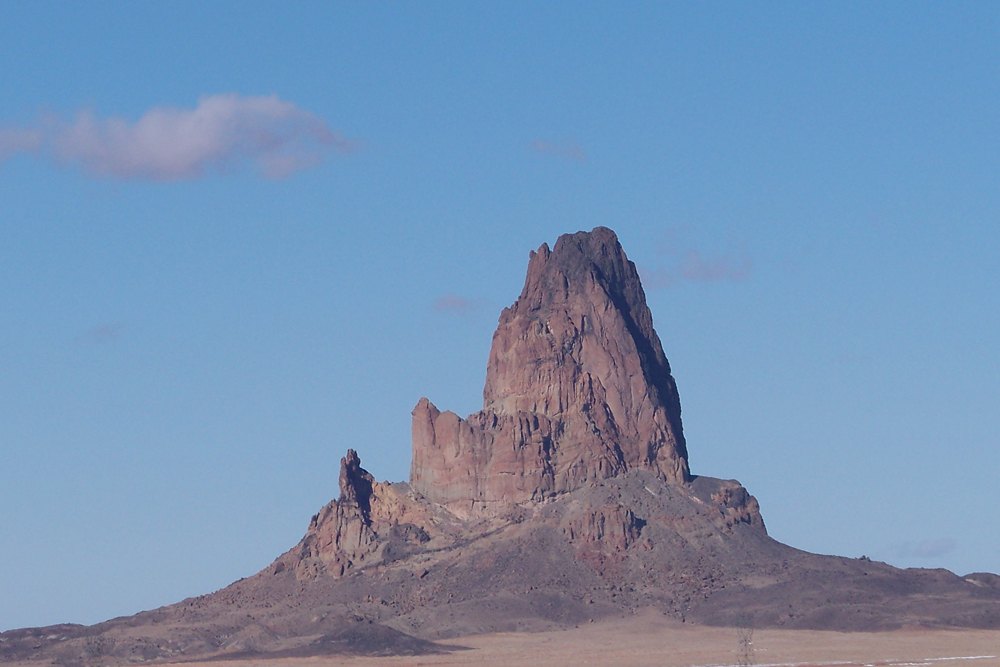
Here, just north of Kayenta, Ariz., this volcanic plug is known in the Dine' language as aghaat'q, meaning "place of wool and hair" due to all the animal fur once found on the sharp, volcanic stone. Today it is known as Agathla Peak or by the nickname "El Capitan" due to it location just south of Monument Valley. It is composed of volcanic breccias (rocks formed from broken minerals and other rocks that has been cemented together) thought to be some 25 million years old. This volcanic plug rises some 1,500 feet (457 meters) above the surrounding high desert plains.
Molten magma
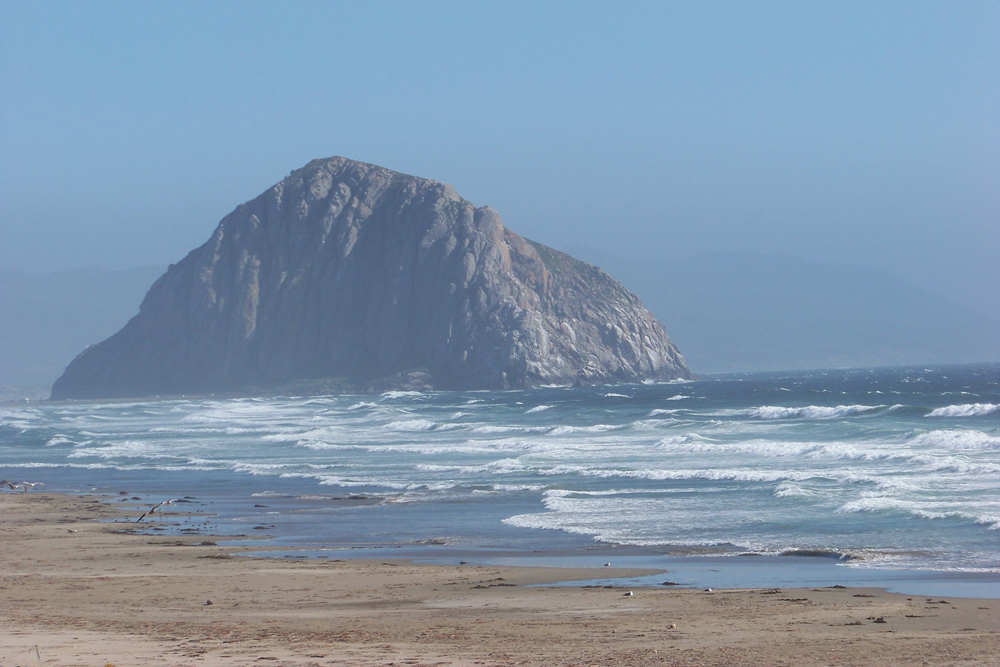
Volcanic plugs are formed when molten magma solidifies in the pipe or neck of an active volcano. Over time, the agents of erosion wear the softer surrounding sediments of the volcanic cone away. Morro Rock, shown here, is a volcanic plug located in the Pacific Ocean at Morro Bay, Calif. The word "morro" comes from Spanish and refers to a rocky outcrop found in the shallow waters of a harbor.
Morro Rock
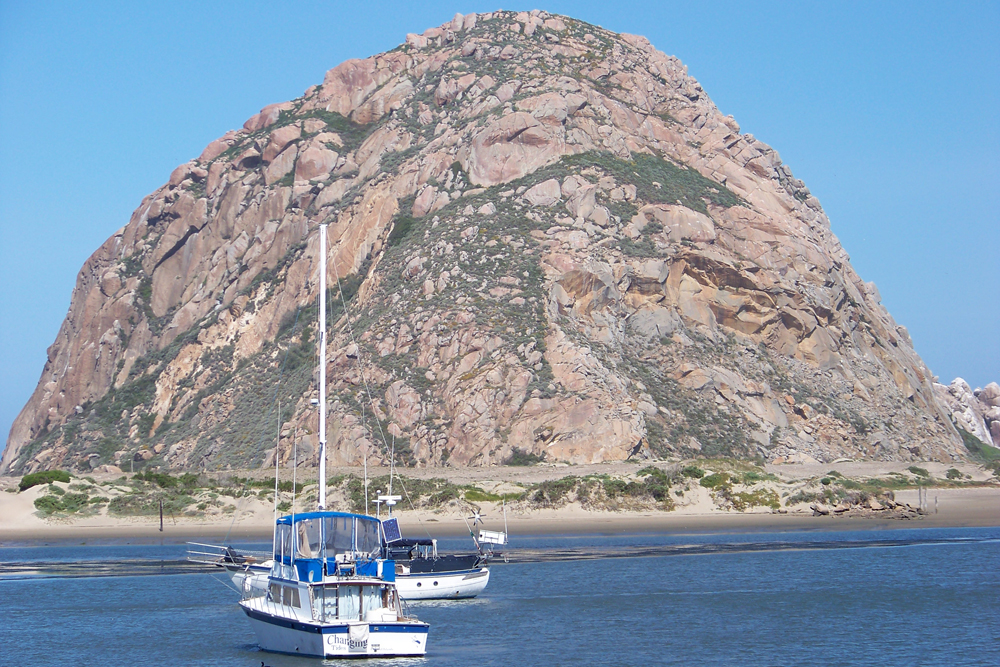
Morro Rock is one of the Nine Sisters (also known as the Morros) found between Morro Bay and San Luis Obispo, Calif. The nine volcanic plugs range in height from Morro Rock's 576 feet (176 m) to Bishop Peak, which is 1,559 feet (475 m) tall. They were formed from volcanic activity that occurred over 20 million years ago.
Volcanic tuff

Some volcanic monoliths look like volcanic plugs but are not. Such is the case of the legendary Weaver's Needle found in the Superstition Mountains east of Phoenix. Named after mountain man Pauline Weaver, who first explored this Sonoran Desert wilderness area in 1831, this thick layer of volcanic tuff rises 1,000 feet (300 m) above the desert floor.
Weaver's Needle
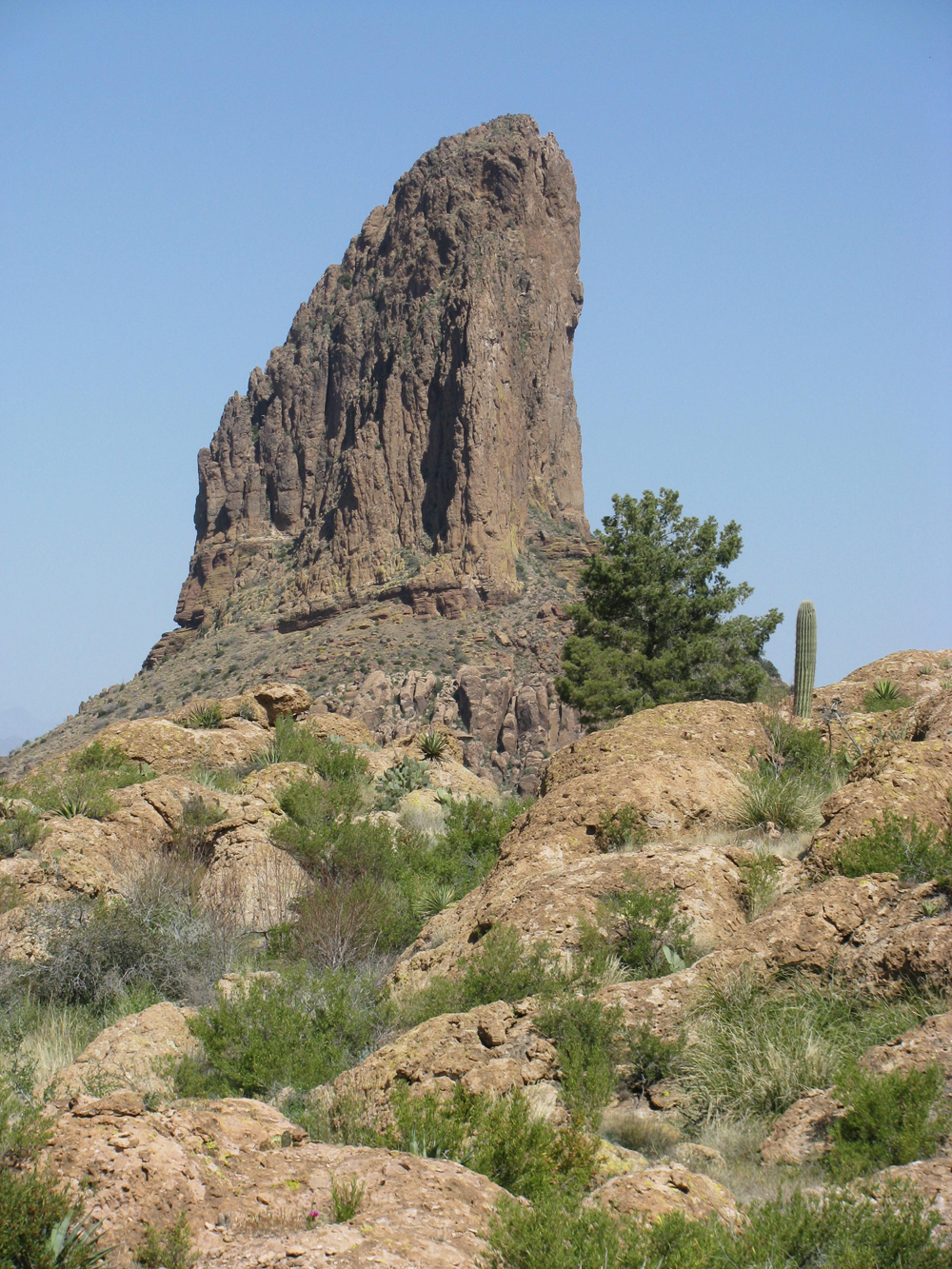
Weaver's Needle is a part of the 160,000-acre Superstition Wilderness Area and is located at the northern end of Peralta Canyon. The fused volcanic ash (tuff) has been heavily eroded resulting in this distinctive monolith that can been seen from miles away. The volcanic activity that formed all of the Superstition Mountain Wilderness ranges in age from 3 million to 25 million years old. The shadow cast by Weaver's Needle plays a key role in the continual search for the legendary Lost Dutchman Gold Mine.
Peralta Canyon
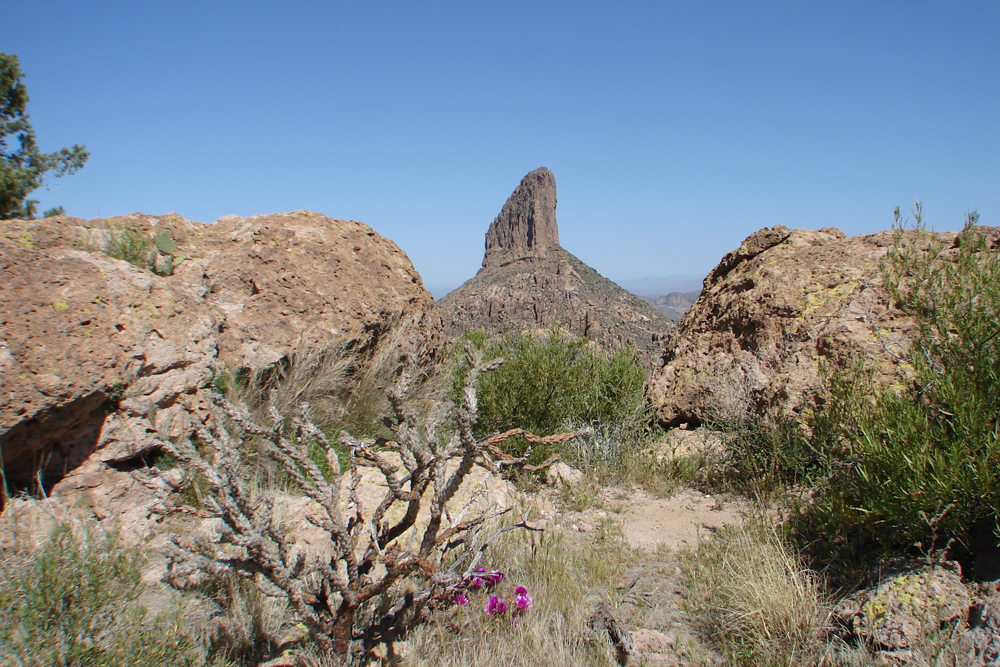
Some modern geologists think that the Superstition Mountains are the result of a large caldera collapse that occurred some 29 million years ago. Pre-Cambrian granites can be found in a few isolated areas formed from intrusive igneous rocks. The many eons of volcanic activity have resulted today in a wonderland of rock formations throughout the region with the volcanic monolith, Weaver's Needle, being the most prominent.
Get the world’s most fascinating discoveries delivered straight to your inbox.
Misunderstanding
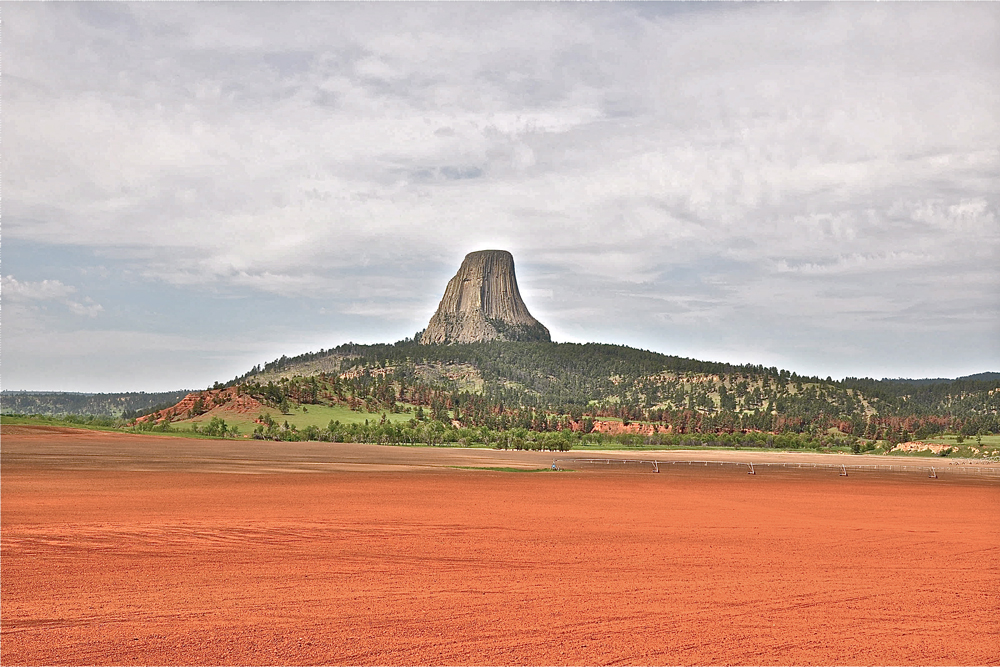
On the northeastern plains of Wyoming stands an enormous volcanic monolith known to the Lakota Indians as Mato Tipila, meaning "Bear Lodge." An 1875 U.S. Army interpreter translated the Lakota word to mean "bad gods tower" and soon the solders were calling it Devils Tower.
Devils Tower
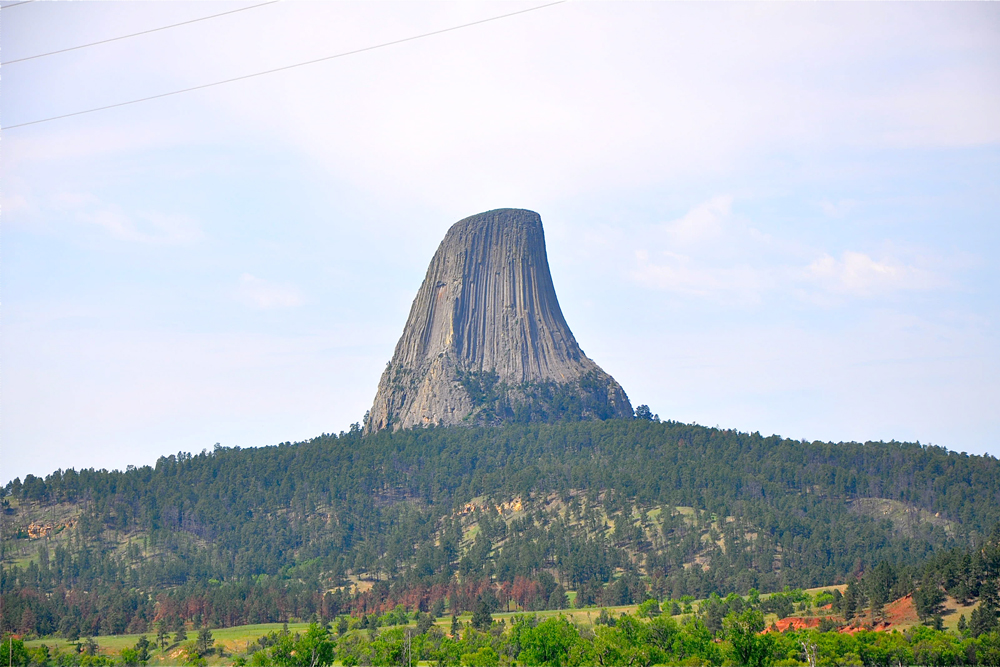
Rising some 867 feet (264 m) above the surrounding landscape, Devils Tower is considered the most remarkable feature of the American Great Plains. Devils Tower is a part of the Black Hills mountain chain and is located near the Belle Fourche River. The summit of Devils Tower has an elevation of 5,112 feet (1,558 m) above sea level.
Sacred place
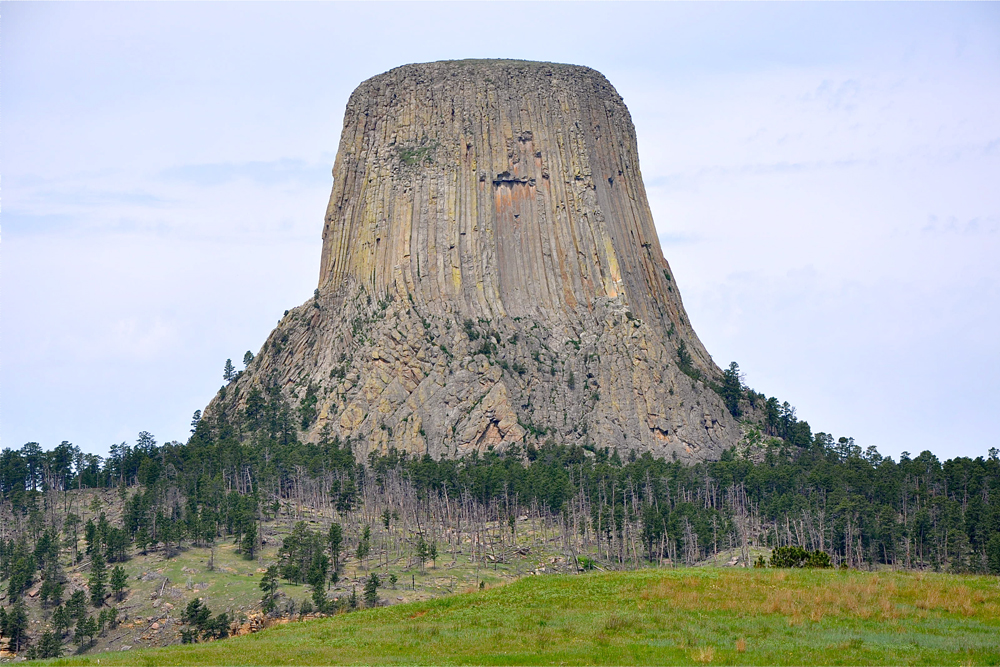
Native Americans have long considered Devils Tower to be a sacred place. The 19th-century pioneers that travelled by covered wagon used Devils Tower as a guiding beacon as it can be seen above the surrounding plains from a distance of over 30 miles (about 50 km). Movie producer Steven Spielberg used the geological wonder as the backdrop for this 1977 hit movie "Close Encounters of the Third Kind."
Folklore
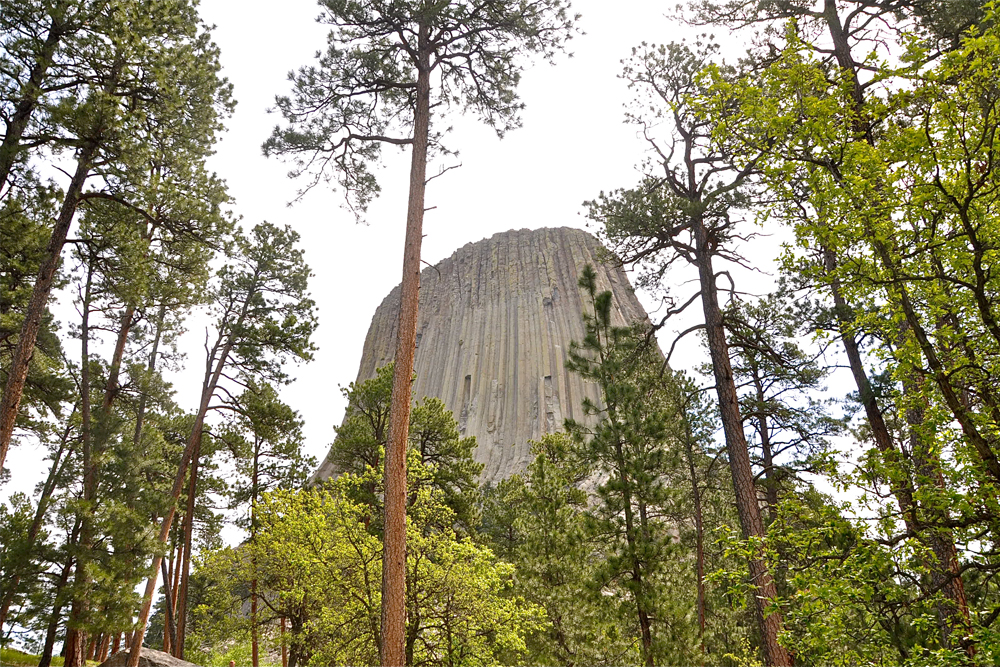
The various Plains Indian tribes have several creation stories for Devils Tower. One story tells of seven young sisters playing in the woods who found themselves being chased by an enormous bear. They jumped onto of a flat rock and the Great Spirit caused the rock to grow and grow into an enormous size. The giant bear continued to jump up at the girls and his claws created the gouges in the rock walls that can be seen even today. The seven sisters became forever safe in the sky as the Pleiades constellation.


